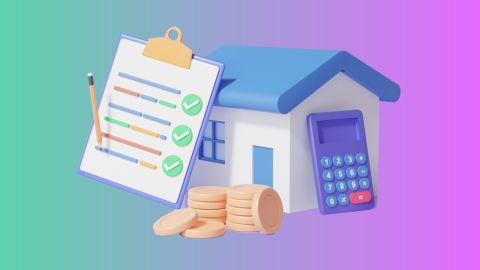What is property tax rate?
A property tax rate is a percentage of the value of a property that the owner must pay annually to local or municipal authorities. This tax is typically calculated based on the assessed value of the property, and the funds generated are used by local governments for infrastructure development, public services, and maintenance of civic amenities. Property tax rates differ from one city or state to another, and the amount a property owner pays depends on the tax rate applied to the assessed value of the property. Understanding the property tax rate is crucial for homeowners and those looking to invest in real estate.Importance of understanding property tax rates
Understanding property tax rates is essential for several reasons. First, property taxes can make up a significant portion of a property owner’s annual expenses. If you are unaware of the tax rate in your area, you could face unexpected financial strain. Second, property taxes are directly linked to property valuation, which could affect your property's market value. Lastly, knowing the tax rates helps property owners make informed decisions regarding property investments and the purchase of loan against property. It is important to research and understand the property tax structure in your region before buying or owning property.How property tax rates are calculated?
Property tax rates are generally calculated based on the assessed value of the property. Local authorities determine the assessed value through a process that involves estimating the current market value of the property. Various factors such as the property’s location, type, size, age, and condition can influence its assessed value. The local government then applies the appropriate tax rate to this value.In India, municipal corporations or local governing bodies assess the property value either through the Annual Rental Value (ARV) or the Capital Value System (CVS), depending on the region. Once the value is determined, the tax rate is applied to calculate the annual tax payable.
Formula to calculate property tax rates
The formula for calculating property tax involves multiplying the assessed property value by the applicable property tax rate. Here's an example:| Formula | Explanation |
| Property Tax = Property Value × Tax Rate | Property Value is the market value or annual rental value; Tax Rate is the local authority's applicable rate. |
Example:
Property Value: ₹10,00,000
Tax Rate: 0.5%
Property Tax = ₹10,00,000 × 0.5% = ₹5,000
This formula helps homeowners understand how their property tax is calculated based on the value of their property and the applicable tax rate.
Factors influencing property tax rates
Several factors influence the property tax rate that a property owner will pay. These include:Location: Property tax rates tend to be higher in urban areas due to better infrastructure and services.
Property size and type: Larger properties or commercial properties may attract higher tax rates.
Age and condition of property: Older or dilapidated properties may be taxed at a lower rate than new, well-maintained ones.
Usage: Residential properties often have different tax rates compared to commercial or industrial properties.
Local authority policies: Different states and cities have varying tax rate policies, which can significantly affect the amount you pay.
State-wise property tax rates in India
Property tax rates in India vary greatly across states and cities. Below is a comparison of property tax rates for select cities:| City/ State | Property tax rate |
| Delhi | 0.5% - 3% |
| Mumbai | 0.2% - 1.5% |
| Bengaluru | 0.5% - 1% |
| Kolkata | 0.5% - 3% |
| Chennai | 0.2% - 1.5% |
Differences between urban and rural property tax rates
The property tax rates between urban and rural areas tend to differ for several reasons:Urban areas: These areas generally have higher property tax rates due to better infrastructure, public services, and higher land values. Property taxes in cities like Mumbai and Delhi are typically higher.
Rural areas: Property taxes in rural areas tend to be lower as the land is less valuable, and there is less demand for public services. However, rural property owners are still required to pay taxes, which are usually based on the land's agricultural value.
How to check property tax rates online?
To check property tax rates online, follow these simple steps:Visit the official website of your municipal corporation or local government.
Navigate to the Property Tax section.
Select the city or area where your property is located.
Look for an option to check the property tax rate or calculate property tax.
Enter your property details, such as size and location, to calculate the exact amount.
Some cities also provide an option to pay property taxes online, making the process more convenient.
How to pay property taxes?
Property tax can usually be paid through various methods:Online payment: Most municipalities have an online portal for property tax payment.
Bank payments: You can also pay your property tax at designated banks or post offices.
In-person payments: Visit your local municipal office to pay in cash or through cheque.
Ensure that you keep a receipt for every payment, as it serves as proof of payment for future reference.
Common challenges in understanding property tax rates
Complex tax structures: Property tax rates can be complicated, with different systems like ARV or CVS, making it difficult to calculate the exact amount.Frequent changes: Tax rates and policies can change over time, especially during budget announcements, which can confuse property owners.
Differences across locations: Property tax rates vary significantly by location, and understanding the specific rules for your area can be challenging.
Delays in updates: Some municipalities may not update their records promptly, leading to discrepancies in property tax assessments.




